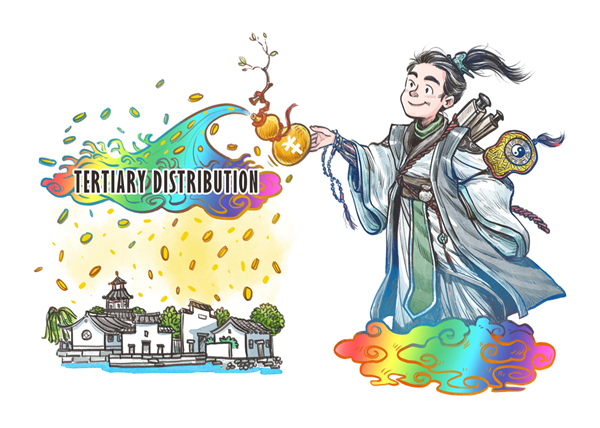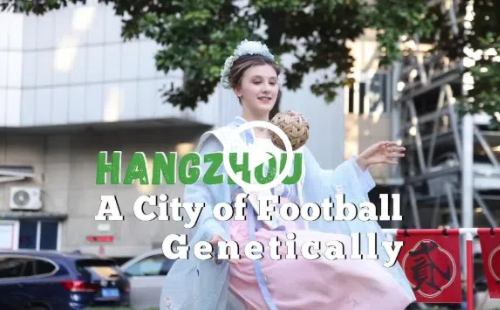Tertiary distribution deserves more efforts

CAI MENG/CHINA DAILY
China needs to further unleash its potential in tertiary distribution and make more institutional improvements to realize common prosperity.
Tertiary distribution plays a critically important role in China's income distribution system and involves social participation in charitable acts like corporate donations and private giving.
Looking at the situation of social donations, one will notice that such donations peaked in 2008 mainly because of people's passion in donating during and after the 2008 Wenchuan earthquake in Sichuan province. Yet the trend flattened after that and even declined in the year 2014 mainly because of the Guo Meimei scandal, who gained notoriety for flaunting a jet-set lifestyle while also working for a charity. So far, social donations have not returned to the 2008 levels yet. This means China's social philanthropy is seriously lagging behind.
Yet at the same time, we have also noticed that between 2010 and 2017, higher-income individuals grew even richer at a faster pace. These people have great enthusiasm for tertiary distribution and social donations. The key is how to make this group, and others, more willing to give back even more to society. Therefore, supply and demand in China's tertiary distribution are both ripe for expansion, but the two sides have not been matched properly. The key lies in creating better institutions and implementing more effective policy.
To realize common prosperity, China needs to tap into the potential of tertiary distribution. The basic concept of common prosperity is universal prosperity and sharing. While prosperity refers to both material wealth and spiritual wealth, as well as wealth in ecological civilization, the idea of sharing underlies equal rights, equal opportunities and a reasonable level of shared outcomes.
In tertiary distribution, material wealth refers to high level of income, rich assets and high-level public services. Sharing of material wealth needs to progress further to narrow income and property gaps, and achieve high levels of equality in basic public services. This requires that public services not only become equally accessible, but more equal in quality.
Meanwhile, equal rights, equal opportunities and reasonable sharing of results represent the spirit of common prosperity. The central authorities have pledged to intensify adjustments in taxes, social security and transfer payments, and reasonably adjust excessively high incomes. In addition, efforts will be made to encourage high-income groups and enterprises to give back more to society.
"Giving back more to society" should not just be a slogan. More specific policies and measures need to be put in place along with reforms so that high-income groups and enterprises will be more willing to give back to society.
Also, common prosperity addresses the issue of uneven development, and focuses on narrowing urban-rural and income gaps. This will generate a certain level of market demand. Efforts will also be made to improve the efficiency of high-income groups and private enterprises in giving back to society. Government, businesses and social organizations should enhance cooperation on promoting tertiary distribution. As the economy grows and social wealth continues to rise, China has enormous room and potential for tertiary distribution.
Attention should be given to three aspects as follows when harnessing the role of tertiary distribution.
A policy environment and institutional environment that is more conducive to tertiary distribution should be nurtured. A more comprehensive policy framework should be formulated to boost tertiary distribution. The current lagging-behind status of tertiary distribution in China is not solely attributable to high-income groups and wealthy enterprises, but is mainly because of deficiencies in policy. There are social norms encouraging people to better get engaged in charity, social organizations and charity, and they deserve more large-scale promotion. At the same time, the government should ramp up efforts in public services that are conducive to tertiary distribution.
Efforts should also be enhanced to improve opportunities for low-income groups. Low-income group still takes up a part in demographics and some of them are still enduring relative poverty. Special aids should be provided to them, such as on-the-job training, to help lift them out of relative poverty. It is also important to provide equal educational opportunities to socially disadvantaged individuals, and equitably share high-quality educational resources.
Also, the government should work to formulate partnerships with social groups. In terms of providing public services, the government and social groups serve the same purpose, yet their orientations are different. A holistic view and plan is needed to see what best can be done in terms of redistribution and tertiary distribution efforts.
The writer is executive director of China Institute for Income Distribution at Beijing Normal University and a professor at Zhejiang University.
The views don't necessarily reflect those of China Daily.





 play
play